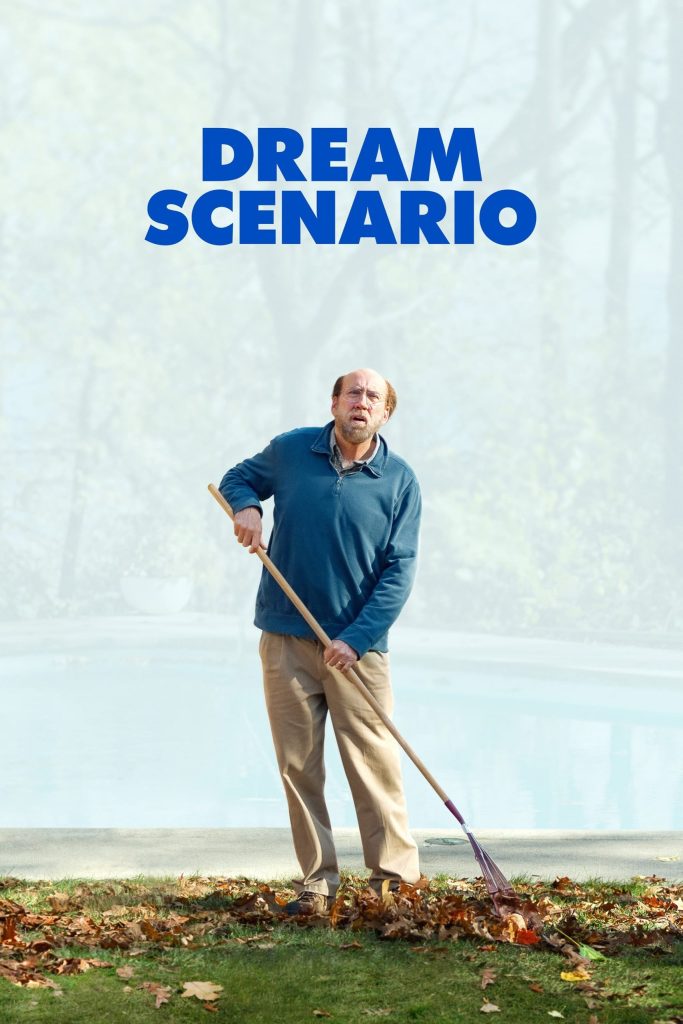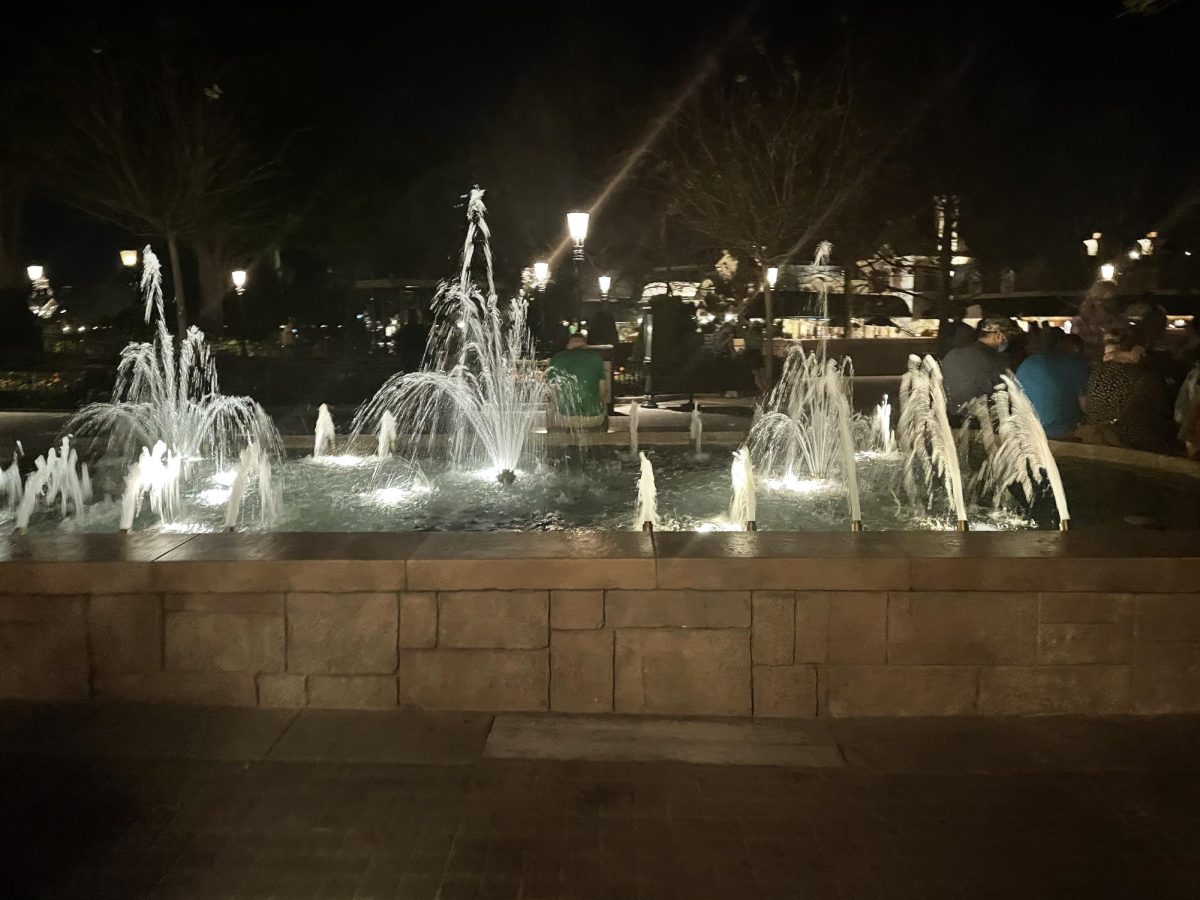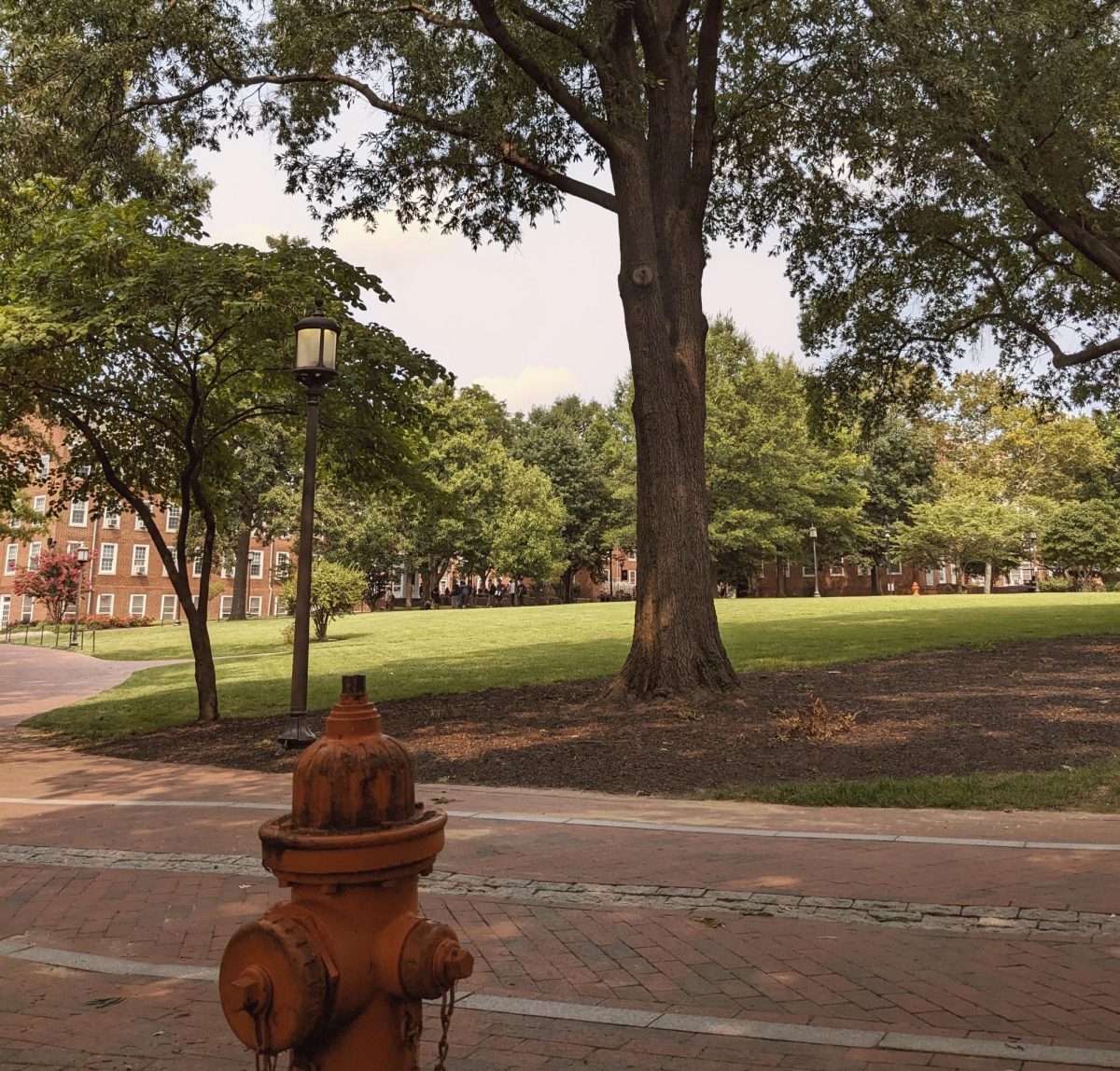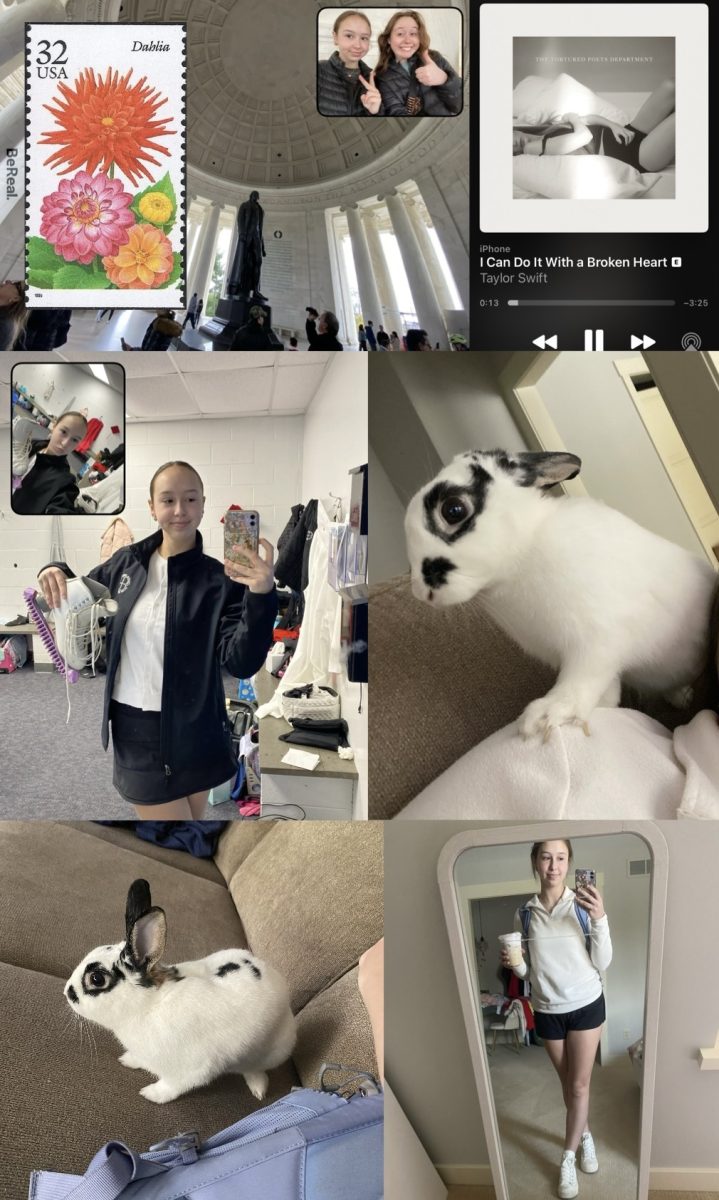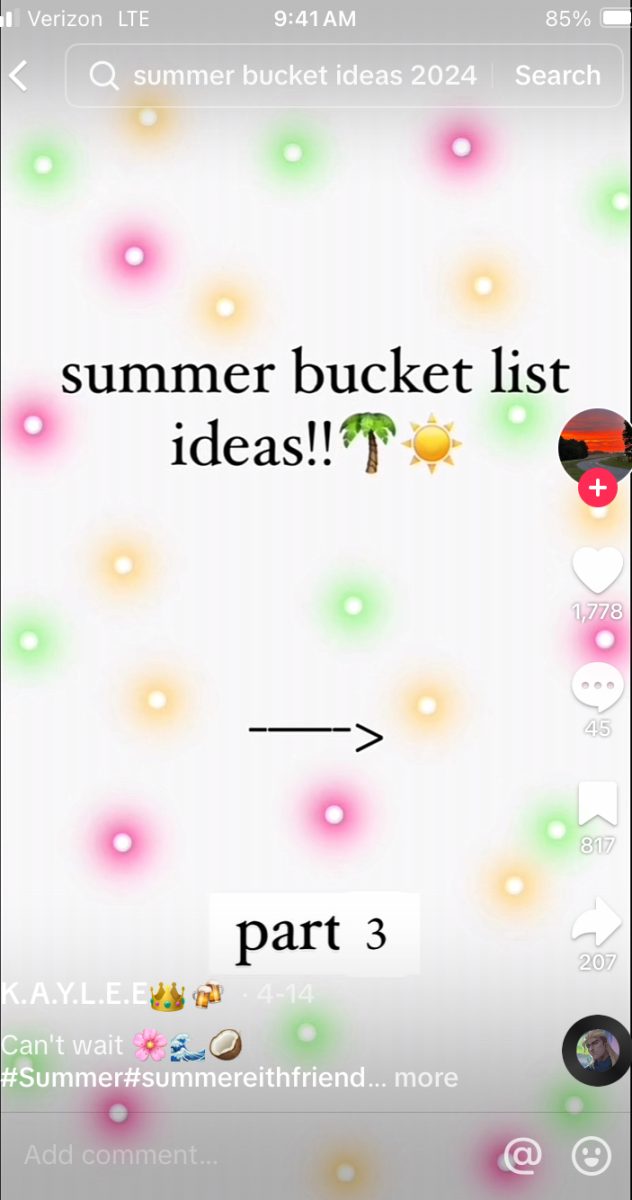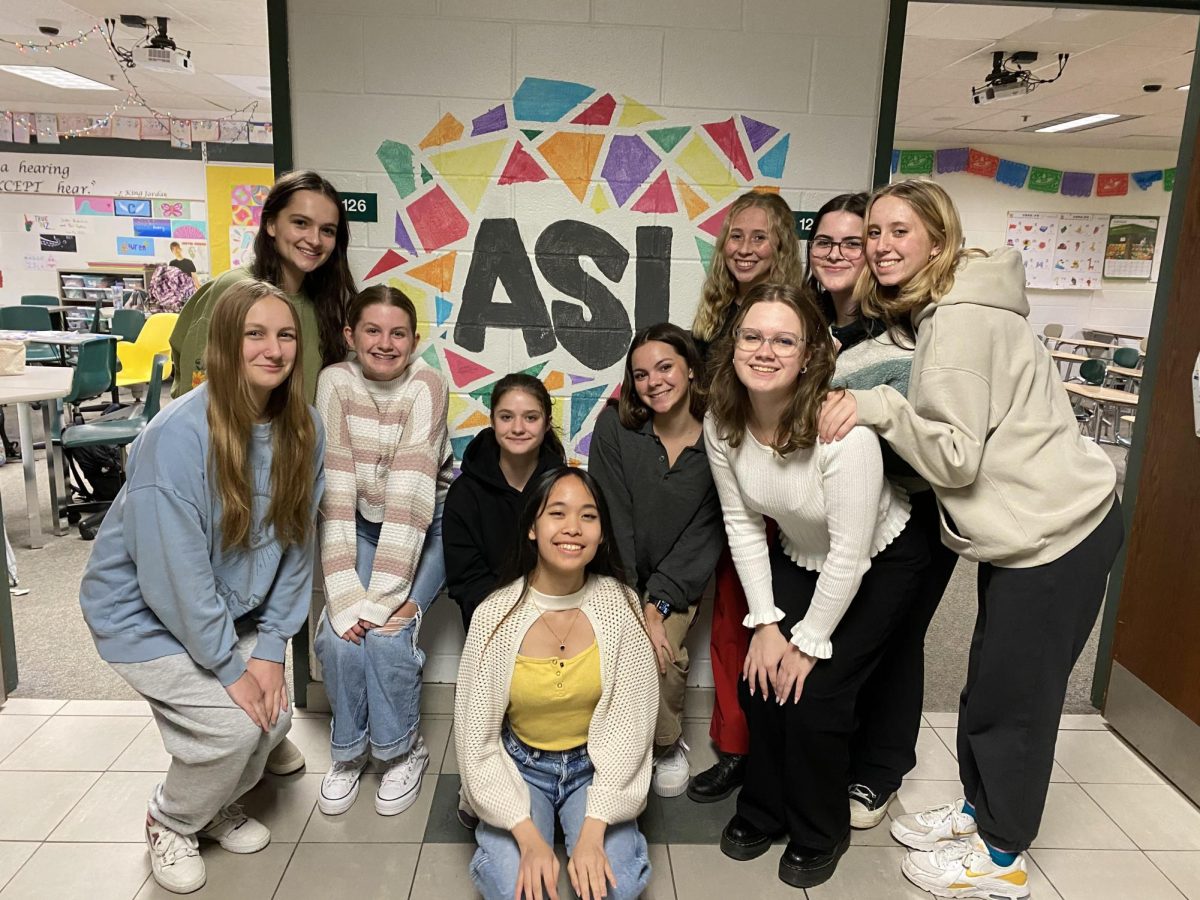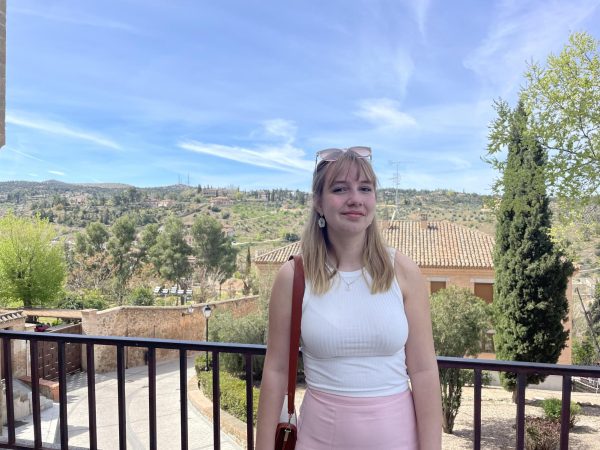ASL is by far one of the most undervalued languages taught in American high schools. As of today, just over 1,000 out of 24,000 public high schools offer the course as part of the curriculum, whereas around 48,000,000 Americans are deaf or have suffered hearing loss.
Due to ASL being a nonverbal language, many students don’t understand or appreciate the value of learning or being proficient in it, which is something ASL teacher Kimberly Anderson tries to bring to light. There are many ways in our day-to-day lives in which ASL can benefit us and, more specifically, high schoolers.
“So many people can benefit from ASL; boys do it at hockey, football, or any sport you can sign across the court or field, or even they sign to their parents in the bleacher,” Anderson said. “A lot of my theater kids use it behind the stage because it’s silent. It really is so cool, and then even if you’re in class with a friend and you sit across the room from each other and you have like something to say you can say like ‘we can study together tonight’ it’s just something like super quick. I think everyone can find something to love about it.”
I think everyone can find something to love about it.
— Mrs. Anderson
The club is offered to all levels of ASL, including beginners who just want an opportunity to learn the language outside of class and become part of a community. The meetings are held every Thursday in Mrs. Anderson’s room from after school to 3:30. The activities range from fun projects to more learning-based activities. The club is primarily student-run by the ASL Level 4 members who have spent their high school career becoming proficient in the language and passing down their knowledge to others and the entire club is a welcoming community of people.
Despite higher levels playing a significant role in the meetings, the club is open to anyone who’s interested in learning more about the language and culture of ASL, one of these students is sophomore Katie Scanlon who is a Level 2 in ASL and regularly attends the meetings. The meetings are used to acclimate students to real-world conversations and situations in which their ASL could be used while also offering learning opportunities.
“Depending on the week, we might learn new signs,” Katie said. “For example, on the week of Halloween, we learned a lot of Halloween-themed signs. We also do a lot of arts and crafts, we are in charge of decorating the bulletin board so we made snowflakes for the board and cut out pictures of winter-themed signs. Sometimes, a student will run the club for a day, and usually during those times we learn new signs and play games to help us remember the signs.”
The weekly meetings are based on the wants of the group and aren’t strictly monitored or restricted, and the supportive environment offers a place for students to make mistakes and learn without fear of being judged. Many students join after taking ASL as a class and want to pursue it further outside of the classroom curriculum, one of these students is sophomore Ayla Wood.
“I think it has the potential to grow into a club where you can have a good time with friends and get to know people you usually wouldn’t talk to,” Ayla said. “Typically we do small activities where you can learn new signs and get a little creative with it. I think of it as a fun space with cool activities and an opportunity to hang out with new people I wouldn’t usually hang out with.”
It’s often rare for people to know ASL even when people around them, like friends or family, are deaf and hard of hearing and this ignorance and lack of wanting to learn the language can cause unnecessary barriers and rifts. Even though ASL isn’t typically offered as part of the high school curriculum, it is quickly becoming more and more integrated into our world as the awareness raises and more people learn the language.
People like Anderson are teaching the younger generations helping to make a significant difference in our world and reaching out to close the gap and barriers between deaf and hearing people.
“In college, I was going to be a teacher for elementary students, and my dad is hard of hearing,” Anderson said. “So I decided to take an ASL class just so someone could communicate with the community and to families and stuff. The class that I got into did a big performance, it was culturally performing and they pulled me aside at the end and were like, ‘We need you to continue this. You need to do this.’ There weren’t many people with my major who also minored in ASL. Usually, people that take sign language as a minor are speech pathologists or special education majors and I wasn’t either so they were like, ‘Oh my gosh, we’d love to have you with like we need people. We need to hire teachers.’ So I decided I wanted to help teach deaf students.”
ASL can often be viewed as an easy language because it doesn’t require speaking, but it requires levels of dedication and commitment that other languages don’t because to properly convey the message, you’re forced to be expressive and put your all into it. The club is the perfect mix and opportunity to work with a supportive group of people and get to practice and apply what you learn in class and what you need to communicate in real-world situations.
“I first joined ASL club because I thought it would be a good opportunity for me to learn more signs outside of class and to learn more information about deaf culture,” Katie said. “I think other people should join because it is a really chill club—you don’t have to be taking sign language to join, and everyone involved is really nice and helpful. We also do a lot of fun stuff besides signing, like arts and crafts and games.”
Whether you’re a beginner or experienced in ASL the club offers activities and a community that provides for all levels and types of people and the club is only one step towards supporting the future generations to pass down ASL. The community, culture, and experience, can’t be found everywhere and the club involves all of these in the activities and projects they focus on.
“I think what I want ASL club to do is bring people together, whether it be over enjoying vocab or a game or learning about the culture,” Anderson said. “But that’s really my goal between the club and my students that when they leave high school they think about their experience here. I want them to think positively about ASL and be so grateful that they learned a skill that is legitimately needed in the world and its growing popularity, but that they learned more than just the language they learned how to be a person, how to work together for the common good of things, and how to be in something together.”















